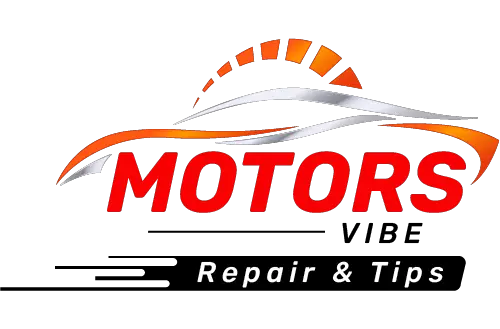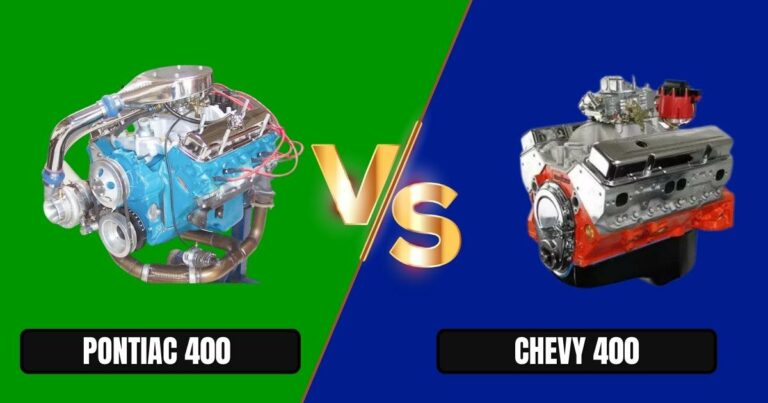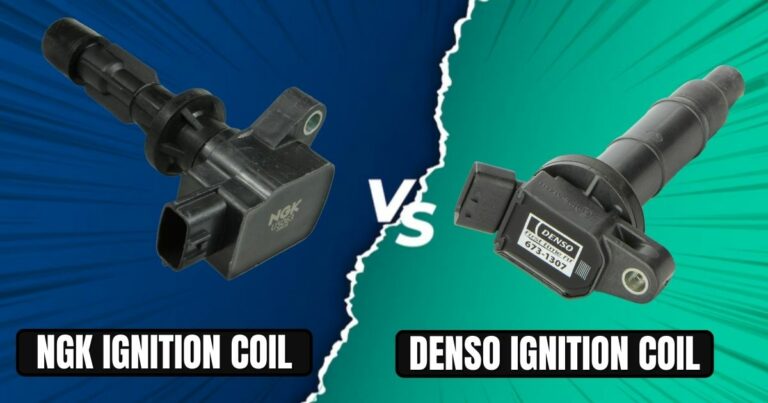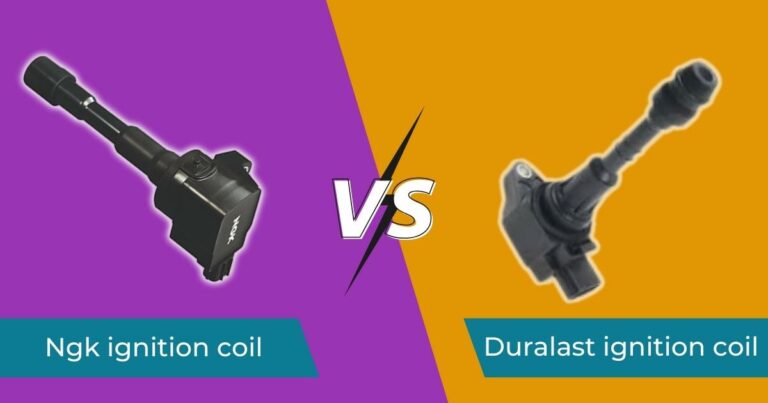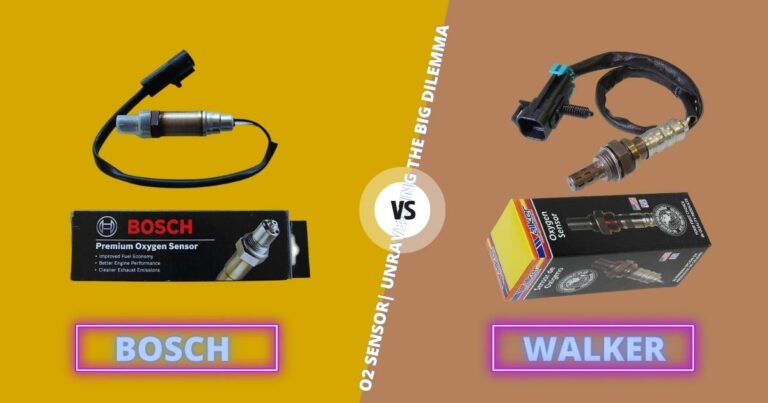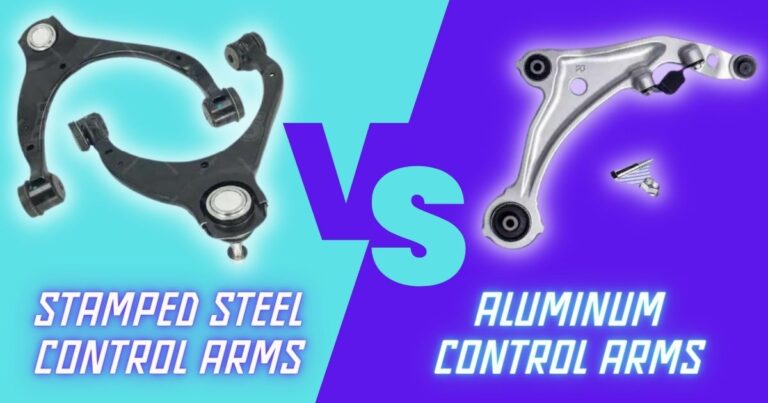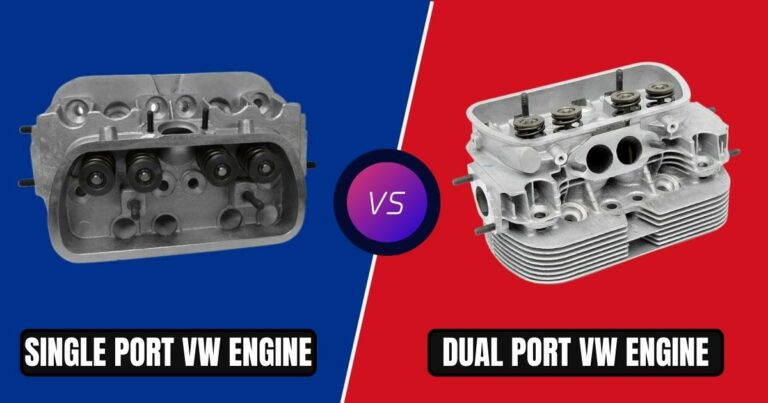High Disk vs Low Disk Wheels | What’s the Difference?
If you’re passionate about car and has a fascination for deep rims, you’ve likely come across terms like low disk vs high disk wheels. For starters, the terms may seem technical at first, but they hold the power to transform your vehicle in ways that go far beyond the surface.
For those who view cars as more than just transportation, understanding the design and specifications of these wheels will play a significant role in shaping the overall driving experience. With that in mind, let’s look at what these wheel specifications entails.
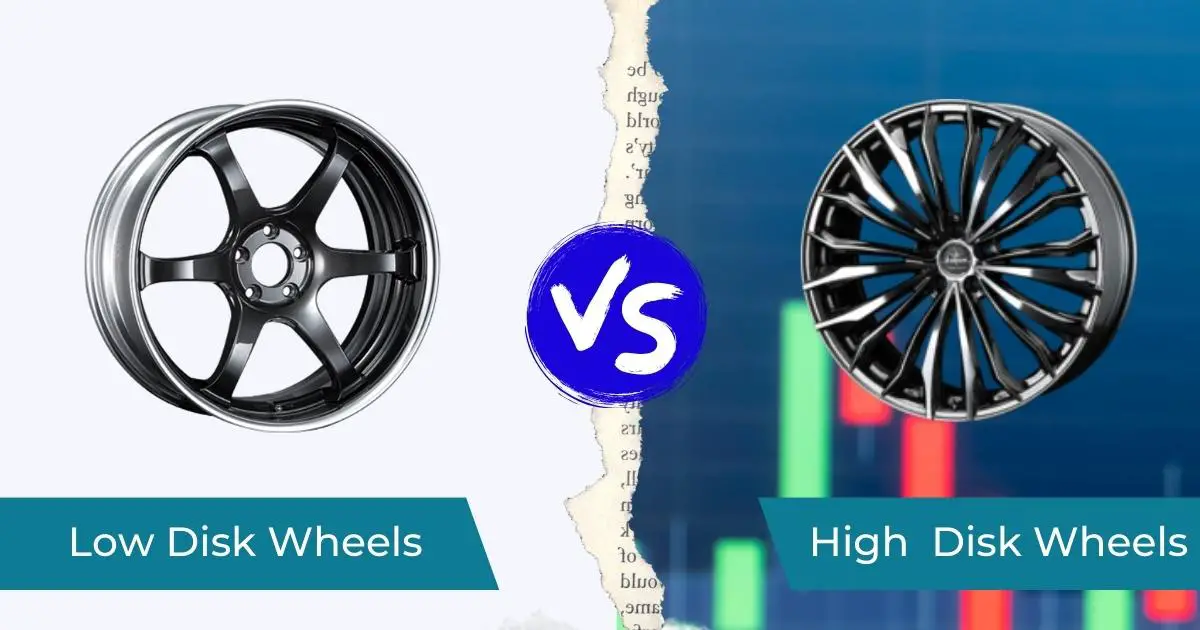
High Disk vs Low Disk Wheels
| High Disk | Low Disk | |
| Ground clearance | High ground clearance | Lower ground clearance |
| Tire size | Often paired with larger diameter, high-profile tires | Paired with smaller diameter, low-profile tires |
| Handling and stability | Provides better stability, especially on rough roads | Characterized by enhanced handling on smooth roads |
| Ride comfort | Offers smoother ride on uneven surfaces | May result in a firmer ride |
| Fuel efficiency | Low fuel efficiency | Better fuel efficiency |
| Braking performance | Require longer braking distances due to added mass | Improves braking performance with shorter stopping distances |
High Disk Wheels
High disk, or simply HI-Disk, is a term used to describe a wheel design characterized by high positive offset or a larger positive backspacing. In simple terms, the mounting surface of the wheel is located closer to the outside/outer edge (positive side) of the wheel. This, in turn, pushes a larger portion of the wheel further into the wheel well of the vehicle.
Characteristics of High Disk Wheels
Larger Diameter
High disk wheels are often characterized by a larger wheel diameter. This means that the wheels are relatively bigger compared to low disk wheels. This results in a more prominent visual impact and unique appearance.
Tucked Appearance
High disk wheels give the appearance of being tucked deeper into the wheel well of the vehicle. This design results in the wheels looking as though they are pushed further into the vehicle’s body, thereby giving a distinct and stylish appearance.
High Ground Clearance
High disk wheels offer better ground clearance, which comes in handy when navigating over obstacles and rough terrain. The wheel size combined with the high ground clearance enhances the vehicle’s ability to clear obstacles and tackle challenging terrains effectively.
Improved Stability
The high disk design helps improve the vehicle’s handling, especially when cornering or driving on uneven surfaces. This not only enhances safety but also contributes to a more confident and controlled driving experience.
Applications
High disk wheels are primarily designed for off-road and specialized applications. They offer increased ground clearance and are commonly used in off-roading, ATVs, UTVs, 4×4 vehicles, overlanding, rock crawling, mudding, custom and show vehicles, racing and rallying, military and emergency vehicles, as well as farming. These wheels are chosen for their ability to handle challenging terrains and rough conditions, making them essential for enthusiasts and professionals who require off-road capabilities.
Advantages
- Enhanced off-road capabilities
- Rugged appearance
- Enhanced traction on uneven surfaces
- Reduced risk of wheel damage
Disadvantages
- Low fuel efficiency
- Reduced ride comfort on smooth roads
Low Disk Wheels
Low disk, also known as LO-Disk, wheels are the exact opposite of their high disk counterparts. This wheel design is characterized by a low positive offset or a smaller positive backspacing. As a result, the mounting surface of the wheel is positioned closer to the centerline of the wheel, which, in turn, allows more of the wheel’s width to extend toward the outside of the vehicle.
Characteristics of Low Disk Wheels
Lower Ground Clearance
Low disk wheels are characterized by their lower ground clearance. This means that the wheel is positioned closer to the vehicle’s chassis, resulting in less space between the wheel and the ground. Low disk wheel design is suitable for smooth roads but may not be ideal for rough or off-road conditions where higher clearance is necessary.
Tire Options
Low disk wheels are often paired with smaller-diameter wheels and low-profile tires. These tires have shorter sidewalls, which contribute to a sporty appearance and enhanced handling on well-maintained roads.
Enhanced Handling
Low disk wheels are favored for their ability to improve handling and cornering capabilities on smooth roads. The combination of the low disk wheels and low-profile tires helps enhance the vehicle’s grip and responsiveness, especially during high-speed driving and when making sharp turns.
Better Braking Performance
This wheel disk type allows for larger brake components, which enhances braking performance. This results in shorter stopping distances, which can be crucial for safety during sudden stops or emergency braking situations.
Applications
Low disk wheels are typically chosen for on-road and performance-oriented applications. They are popular in street and sports cars, sedans, high-performance vehicles, urban commuting, custom and tuned vehicles, track racing, touring and GT racing, compact and midsize SUVs, hybrid and electric vehicles, and highway commuting. These wheels offer a sleek and sporty appearance, which enhances on-road handling and responsiveness.
Advantages
- Sleek and sporty appearance
- Better fuel efficiency
- Great on-road handling
- Enhanced acceleration on-road
Disadvantages
- Limited ground clearance
- Shorter sidewalls might not absorb road imperfections, resulting in a less comfortable ride
- Vulnerable to potholes and debris on the road
How to Choose High Disk Wheels or Low Disk Wheels
Customizing the size and offset of wheels to fit a specific vehicle revolves around your vehicle’s specifications and requirements. As such, choosing between high disk wheels and low disk wheels depends on your specific needs, driving preferences, and the intended use of your vehicle. Some of the factors you’ll need to consider when choosing between high and low disk wheels include;
- Bolt Pattern – Ensuring that the wheel’s bolt pattern matches the vehicle’s hub pattern is crucial for proper fitment. A mismatch in bolt patterns can lead to difficulties in installation, reduced safety, and damage to the wheel or vehicle.
- Hub Diameter – Hub diameter is also important to guarantee the wheel fits securely on the hub. A matching hub diameter provides stability to the vehicle by preventing any wobbling, vibrations, and lateral movements that can occur when the fit is loose or not precise.
- Tire Size – The size and aspect ratio of the tires should also complement your wheel disk type. This will allow you to maintain the diameter and circumference within acceptable limits.
- Fender Clearance- Assessing the available space between the wheel and the vehicle’s fenders is crucial to avoid rubbing or clearance issues when the suspension is compressed or when steering.
- Brake Clearance- Large brake calipers and rotors will require wheels with sufficient clearance to fit properly. As such, make sure there’s enough space to accommodate the vehicle’s braking system.
- Weight and Load Capacity- Consider the weight of the wheels and tires, as well as the load capacity. This will help ensure that the wheels and tires can handle the vehicle’s weight and any additional loads that may be placed on them.
- Alignment and Suspension Modifications- When altering wheel size or offset, it might be necessary to make adjustments to the vehicle’s alignment and suspension to maintain proper handling characteristics. These adjustments are essential not only for preserving handling performance but also for ensuring safety and tire wear.
- Tire Pressure Monitoring System- If your vehicle is equipped with a Tire Pressure Monitoring (TPMS) System, make sure the system remains functional after wheel and tire changes. When customizing your wheels and tires, you might need to reinstall the TPMS sensors on the new wheel and tire setup. Additionally, the system may require reprogramming to recognize the new sensors and properly monitor tire pressure.
Also Read: Cardone vs GSP CV Axle- Comparing Performance and Value
Parting Shot!
The choice of a wheel disk can significantly impact the way your vehicle looks, handles, and performs. Low disk wheels are best suited for their better on-road handling and acceleration, while high disk wheels excel in off-road performance and durability. As such, it is important to choose wisely and let your wheels be a reflection of your personality and driving preferences.
